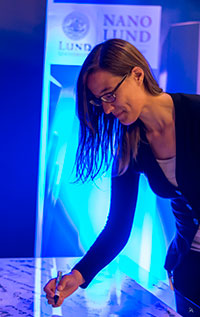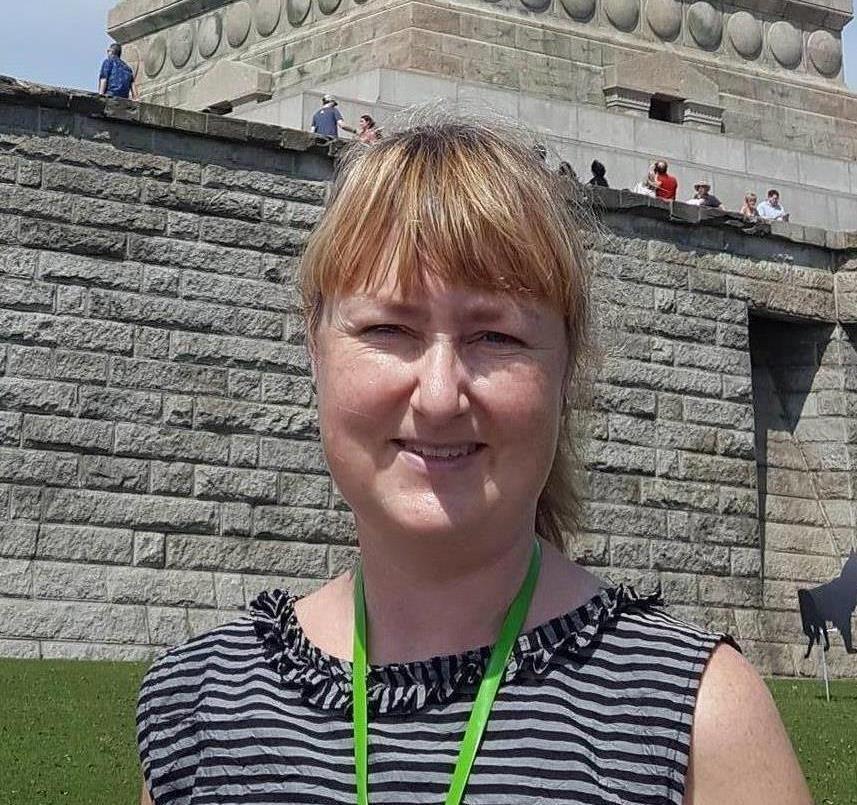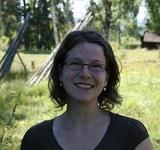 |
The nice picture to the right originates from our Annual Meeting in September where we launched and “signed up” for our core values represented by the three guiding words Openness, Enthusiasm and Pioneering. These three words, and the descriptions of what we mean by them and how we want them to be understood, are the result of a year-long process that engaged all of NanoLund and that featured many discussions of the scientific and personal culture we wish to have for our environment. Now that the values have been defined and written down (available in printed form from your group leader) we have asked our Members and group leaders to initiate discussions in their groups in the near future. The aim is to develop a joint understanding of our values and of how we can best use them in real life so that they will become a living element of our culture.
An excellent example for our values can help guide important processes is the recent launch of the NanoLund Future Themes program that aims to identify and financially support new, major research themes. Specifically, we are looking for research initiatives that have the potential to pioneer NanoLund research into new areas of excellence, that offer openings for many NanoLund research groups to engage, and for which there is considerable enthusiasm – meaning many of us have a good gut feeling about the science and applications that may emerge. I find it personally very satisfying to have this set of tools for decision making that resonates well with me, and that has been accepted and approved by my colleagues, and find myself using them in big and small decisions. I very much hope that also all of you will find our core values to be a valuable asset in your work.
Heiner Linke, for the NanoLund leadership
Image caption: The winning picture from our Annual Meeting photo competition, taken by Laura Abariute and featuring Inga von Ahnen. |
|
| We are very happy to make available the NanoLund Annual Report for 2016, based on data collected and compiled by Line Lundfald. The report is nicely designed and layouted by Martin Stankovski, making it easy to access numbers and highlights we can be proud of. The report is available for download here. |
|
Peter Jönsson (Physical Chemistry) has been awarded an ERC Starting Grant of 1.5 M Euro for 5 years. The project named SELFOR explores how an immune response starts at a molecular level, and how our immune system can separate between “self” and “foreign” molecules.
Read the Lund University press release (in Swedish), the announcement from the Swedish Science Foundation (in Swedish and in English) and more on the homepage of the department of Physical Chemistry (in English). |
|
|
A team of NanoLund scientists led by Kimberly Dick Thelander won an award of 34,2 MSEK over five years for the project "Controlled atomic scale 3D ordering for exotic electronic phases". The grant was awarded by the Knut and Alice Wallenberg Foundation to projects of the highest international level, and potentially leading to future scientific breakthroughs. The grants give the researchers the opportunity to try out new and bold ideas over an extended period.
Read more in the press release by KAW (in Swedish and in English) and here (in Swedish). |
|
The Swedish Research Council announced their grant decisions in Natural and Engineering Sciences on October 31st (overall approval rate 19%) to eight NanoLund researchers: Knut Deppert, Pierre-Adrien Mante, Petter Persson, Joachim Schnadt, Rainer Timm, Andreas Wacker, Kaibo Zheng and Donatas Zigmantas.
Read more on the homepage of the Swedish Research Council. |
|
Over the summer Google invested 120 MSEK in the NanoLund spin-off company Glo. Glo is developing RGB direct-emitting display panels with better contrast and lower power consumption than LCD screens while yielding higher overall brightness than OLED.
Another NanoLund spin out, Sol Voltaics, secured 21 million US dollar in a funding round. The new finance will be used to accelerate commercialization of Sol Voltaics highly anticipated solar efficiency boosting technology, SolFilm™ which promises to increase conventional solar panel efficiencies by up to 50% |
|
| NanoLund's Annual Meeting 2017 took place on Thursday, September, 7th, 2017 at Gasquesalen, LTH Kårhuset. This years’ theme was “Why we do Nanoscience: from Fundamental Curiosity to Society’s Grand Challenges”. The meeting featured excellent overview and vision presentations by senior scientists, invited talks by junior and senior NanoLund members, as well as a busy poster session covering all scientific areas of NanoLund. The meeting was attended by NanoLund’s Scientific Advisory Board and about 180 individuals from the NanoLund community. |
|
| NanoLund welcomes new Affiliated Members Maria Hedmer and Monica Kåredal and new Member Ville Maisi. The decision on membership was taken by the NanoLund board August 29th. At the same time Håkan Tinnerberg and Niklas Sköld have chosen to move on to new challenges outside academia. |
|
 |
works as an occupational hygienist at Occupational and Environmental Medicine, and works clinically as well as with research with focus on occupational exposure to particles such as manufactured nanoparticles, welding fumes and diesel exhausts. She is also a member of the Expert Panel of the Swedish National Platform for Nanosafety at Swetox (SweNanoSafe).
Read more about Maria here. |
 |
 |
is a hospital chemist at Occupational and Environmental Medicine at Region Skåne, with focus on biomarker analysis and other sampling techniques developed to detect occupational exposure of harmful substances. Her work includes analysis of clinical samples as well as research and the research involves identifying new biomarkers that can indicate early signs of illness due to chemical exposures.
Read more about Monica here. |
 |
 |
joined Lund University as an Assistant Professor in Solid State Physics in June 2017, coming to us from Aalto University in Finland. His research focuses on quantum dots, zero dimensional structures that we obtain when reducing the size of electronic devices to the extreme. Ville is studying fluctuations and nanothermodynamics in these quantum dot circuits and aims to realize nanowire-based quantum dot devices for quantum technology.
Read more about Ville here. |
|
| Interested in becoming a student member of NanoLund? Sign up here and get access to events, seminars, and research projects. NanoLund student membership is open for students on all levels and in all study programs at Lund University. |
 |
| A plasma processing workshop focusing on the fundamentals of plasma etching and depositionwill occur on November 15-16 in Lund. Ivan Maximov is arranging the workshop. More information and program is found here. |
 |
| SwedNanoTech is arranging a Friday breakfast meeting in informal settings at Barista, Ideon Alfa (Scheelevägen 15), Lund on November 17 from 07:30-09:00. Come network with researchers, entrepreneurs, investors and other people in the SwedNanoTech network interested in Materials. Breakfast at your own expence. Sign up and more information here (in Swedish only). |
|
| Nov 30, 2017 at 15:15 Aboma Merdasa will give a tutorial entitled "Super-resolution Microscopy in Material Science - Resolving Material Properties at a Nanoscale" at k-space (Q179, Department of Physics). |
 |
| Since this semester, NanoLund welcomes undergraduate students from all study programs as student members. The kick off will be on November 29 at 17:00 in k-space will include research presentations by PhD students and will be followed by snacks and the possibility for Student members, and NanoLund researchers to meet and talk informally. |
 |
5-6 februari 2018, Medicon Village in Lund will be the site for a SUperresolution Techniques Workshop aiming to bring together experts from the whole "assembly line" that leads to cutting-edge, meaningful, and simply staggering sub-diffraction fluorescence image data.
More information and registration on suptechs.org
|
|
Get a Junior Scientist Ideas Award!
NanoLund happily announces the opportunity for students and postdocs to apply for funds for seedling projects, to try out a new idea. Up to four proposal will be selected, which will receive funding up to 100.000SEK and a Junior Scientist Ideas Award.
More information will come during November, so stay tuned (and keep an eye on the Members programs and benefits homepage Members programs and benefits homepage). Deadline will be 15 January 2018. |
 |
| Are you new in the NanoLund environment? Welcome to an introductory event in the afternoon of August 24, 2017. We inform about what NanoLund is, how we work together and what opportunities are open to you. To sign up (or to let us know about new people who should be invited) please contact Line.Lundfald@ftf.lth.se |
|
Direct comparison between in vivo and in vitro microsized particle phagocytosis assays in Drosophila melanogaster
K Adolfsson, L Abariute, AP Dabkowska, M Schneider, U Häcker, CN Prinz
Toxicology in Vitro 46 (2018) 213–218 DOI: 10.1016/j.tiv.2017.10.014
Enhanced Size Selection in Two-Photon Excitation for CsPbBr3 Perovskite Nanocrystals
J Chen, P Chábera, T Pascher, ME Messing, R Schaller, S Canton, K Zheng, T Pullerits
J. Phys. Chem. Lett., 2017, 8 (20), pp 5119–5124 DOI: 10.1021/acs.jpclett.7b02178
Microfluidics-Based Approaches to the Isolation of African Trypanosomes
MP Barrett, JM Cooper, C Regnault, SH Holm, JP Beech, JO Tegenfeldt, A Hochstetter
Pathogens 2017, 6, 47 DOI:10.3390/pathogens6040047
Defect-induced Infrared Electroluminescence from Radial GaInP/AlGaInP Quantum Well Nanowire Array Light- Emitting Diodes
L Hussain, M Karimi, A Berg, V Jain, MT Borgstrom, A Gustafsson, L Samuelson, H Pettersson
Nanotechnology in press DOI: 10.1088/1361-6528/aa913c
Kinetically limited composition of ternary III-V nanowires
J Johansson, M Ghasemi
Phys. Rev. Materials 1, 040401(R) DOI: 10.1103/PhysRevMaterials.1.040401
From plasma to nanoparticles: optical and particle emission of a spark discharge generator
A Kohut, L Ludvigsson, BO Meuller, K Deppert, ME Messing, G Galbács, Zs Geretovszky
Nanotechnology 28 (2017) 475603 (11pp) DOI: 10.1088/1361-6528/aa8f84
Electronic Structure Changes Due to Crystal Phase Switching at the Atomic Scale Limit
JV Knutsson, S Lehmann, M Hjort, E Lundgren, KA Dick, R Timm, A Mikkelsen
ACS Nano, 2017, 11 (10), pp 10519–10528 DOI: 10.1021/acsnano.7b05873
Open channel deterministic lateral displacement for particle and cell sorting
TSH Tran, BD Ho, JP Beech, JO Tegenfeldt
Lab Chip, 2017, 17, 3592 DOI: 10.1039/c7lc00707h
Carbohydrate-based block copolymer systems: directed self-assembly for nanolithography applications
I Otsuka, N Nilsson, DB Suyatin, I Maximov, R Borsali
Soft Matter, 2017,13, 7406-7411 DOI: 10.1039/C7SM01429E
Vertical InAs/InGaAs Heterostructure Metal–Oxide–Semiconductor Field-Effect Transistors on Si
O-P Kilpi, J Svensson, J Wu, AR Persson, R Wallenberg, E Lind, L-E Wernersson
Nano Lett., 2017, 17 (10), pp 6006–6010 DOI: 10.1021/acs.nanolett.7b02251
Thermodynamic assessment and binary nucleation modeling of Sn-seeded InGaAs nanowires
M Ghasemi, M Selleby, J Johansson
Journal of Crystal Growth 478 (2017) 152-158 DOI: 10.1016/j.jcrysgro.2017.08.034
Ultrasensitive and Fast All-Inorganic Perovskite-Based Photodetector via Fast Carrier Diffusion
B Yang, F Zhang, J Chen, S Yang, X Xia, T Pullerits, W Deng, K Han
Adv. Mater. 2017, 29, 1703758 DOI: 10.1002/adma.201703758
A Method for Investigation of Size-Dependent Protein Binding to Nanoholes Using Intrinsic Fluorescence of Proteins
B Malekian, I Maximov, R Timm, T Cedervall, D Hessman
ACS Omega 2017, 2, 4772−4778 DOI: 10.1021/acsomega.7b00241
Single-nanowire, low-bandgap hot carrier solar cells with tunable open-circuit voltage
S Limpert, A Burke, I-J Chen, N Anttu, S Lehmann1 S Fahlvik, S Bremner, G Conibeer, C Thelander, M-E Pistol, H Linke
Nanotechnology 28 (2017) 434001 DOI: 10.1088/1361-6528/aa8984
Characterization of individual stacking faults in a wurtzite GaAs nanowire by nanobeam X-ray diffraction
A Davtyan, S Lehmann, D Kriegner, RR Zamani, KA Dick, D Bahrami, A Al-Hassan, SJ Leake, U Pietscha, V Holy
J. Synchrotron Rad. (2017). 24, 981–990 DOI: 10.1107/S1600577517009584
Insights into charge carrier dynamics in organo-metal halide perovskites: from neat films to solar cells
J Peng, Y Chen, K Zheng, T Pullerits, Z Liang
Chem. Soc. Rev., 2017, 46, 5714-5729 DOI: 10.1039/C6CS00942E
An open-source Python package for calculations of transport through quantum dot devices
G Kirsanskas, JN Pedersenc, O Karlstrom, M Leijnse, A Wacker
arXiv:1706.10104v2 [cond-mat.mes-hall] 16 Oct 2017
Carrier Recombination Processes in Gallium Indium Phosphide Nanowires
W Zhang, X Zeng, X Su, X Zou, P-A Mante, MT Borgström, A Yartsev
Nano Lett., 2017, 17 (7), pp 4248–4254 DOI: 10.1021/acs.nanolett.7b01159
Optical analysis of a III-V-nanowire-array-on-Si dual junction solar cell
Y Chen, O Höhn, N Tucher, M-E Pistol, N Anttu
Optics Express Vol. 25, Issue 16, pp. A665-A679 (2017) DOI: 10.1364/OE.25.00A665
Non-lamellar lipid assembly at interfaces: controlling layer structure by responsive nanogel particles
AP Dabkowska, M Valldeperas, C Hirst, C Montis, GK Pálsson, M Wang, S Nöjd, L Gentile, J Barauskas, N-J Steinke, GE Schroeder-Turk, S George, MWA Skoda, T Nylander
Interface Focus 7: 20160150 DOI: 10.1098/rsfs.2016.0150
Bending and Twisting Lattice Tilt in Strained Core–Shell Nanowires Revealed by Nanofocused X-ray Diffraction
J Wallentin, D Jacobsson, M Osterhoff, MT Borgström, T Salditt
Nano Lett., 2017, 17 (7), pp 4143–4150 DOI: 10.1021/acs.nanolett.7b00918
Coupling and braiding Majorana bound states in networks defined in proximate two-dimensional electron gases
M Hell, K Flensberg, M Leijnse
PHYSICAL REVIEW B 96, 035444 (2017) DOI: 10.1103/PhysRevB.96.035444
Individual Defects in InAs/InGaAsSb/GaSb Nanowire Tunnel Field Effect Transistors Operating below 60 mV/decade
E Memisevic, M Hellenbrand, E Lind, AR Persson, S Sant, A Schenk, J Svensson, R Wallenberg, L-E Wernersson
Nano Lett., 2017, 17 (7), pp 4373–4380 DOI: 10.1021/acs.nanolett.7b01455
|
|
|